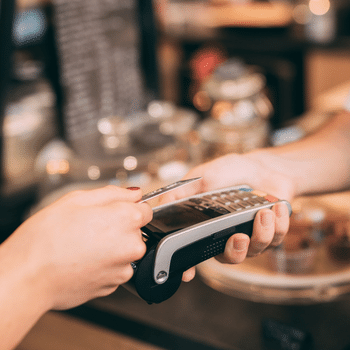Is contactless payment safe? Weighing the risks and benefits
 Contactless payment methods are already a reality in Brazil, with these types of operations rocketing 700% from 2020 to 2021.
Contactless payment methods are already a reality in Brazil, with these types of operations rocketing 700% from 2020 to 2021.
The main reason for this sharp rise is the speed, convenience and hygiene of the process, as there is no need to insert a card into a machine and enter a PIN. But do these benefits really outweigh the risks of using this contactless payment method? Let’s discover together.
How does contactless payment work?
Contactless payment can be activated on pretty much all current debit and credit cards. The procedure is performed using a bank application or by directly contacting a branch attendant.
With this function enabled, you can pay for purchases in practically any establishment by simply approximating the card to the card machine, without the need for a PIN.
Contactless payment also works for digital cards. By activating this option and including the card in a digital wallet, payment can be made by simply approximating a smartphone to the machine.
Is contactless payment safe?
Yes, the tech behind contactless payment is safe, and financial institutions and card brands constantly invest in technology that makes fraud connected to this method a lot more difficult.
However, most of the risks linked to this facility are related to the outside world and can be avoided with close attention and care.
Risks of contactless payment
Loss or theft: the main risk involving contactless payment is the loss or theft of a card. After all, someone up to mischief could use it to make purchases without any need for a PIN. In the case of smartphones, there is a higher level of security, since there is a good chance the device itself will require a password to authorize any payment.
Be careful with your back pocket: if you keep your card in your back pocket without any protection, a criminal can easily benefit from a distraction to get up close with a card machine and debit certain amounts from your account. It’s worth investing in an RFID-blocking wallet to prevent criminals from reading your card without you noticing.
Altered amount: since contactless payment is more dynamic than traditional means, most people may end up forgetting to check the amount being paid. Remember: it is really important to check the vendor’s machine screen for the amount actually being charged.
How to avoid contactless payment fraud
There is a series of care measures and best practices that can be adopted to make contactless payment safer. Find out more here!
-
Extra care with your card: since your card allows for PIN-free payments, extra care is required. Try not to keep it in your back pocket or let it out of your sight.
-
Check the payment amount: before approximating the card or smartphone to the payment device, check the amount that appears on the screen.
-
Set a payment limit: most cards allow you to define a maximum amount for PIN-free contactless payments. Select a convenient amount for your daily needs, but which doesn’t offer as much risk in the event of the loss or theft of the card.
-
Disable the option in risky cases: we all know that certain events leave us more vulnerable to loss and theft, like festivals, concerts and public events. In these cases, consider disabling contactless payment, enabling it once again when you’re back home.
-
Enable payment notifications: keep the bank application notifications enabled, along with purchase notices via SMS. That way, if someone tries to use your card, you know immediately and can avoid further problems.
-
Cancellation in the event of loss: should you lose your bank card or smartphone with access to your digital cards, immediately block the cards and contact your bank to request a replacement.
Conclusion
When the topic is technology and financial transactions, the subject of fraud is sure to come up. Even so, contactless payment is a practical and safe option. Banks and card brands are increasingly prepared to avoid this type of problem. And we account holders have the responsibility to learn more about these possibilities and take all measures necessary to increase our own security.
Article originally written in Portuguese by Perallis Security Content Team: Pagamento por aproximação é seguro? Entenda riscos e vantagens — Perallis Security
